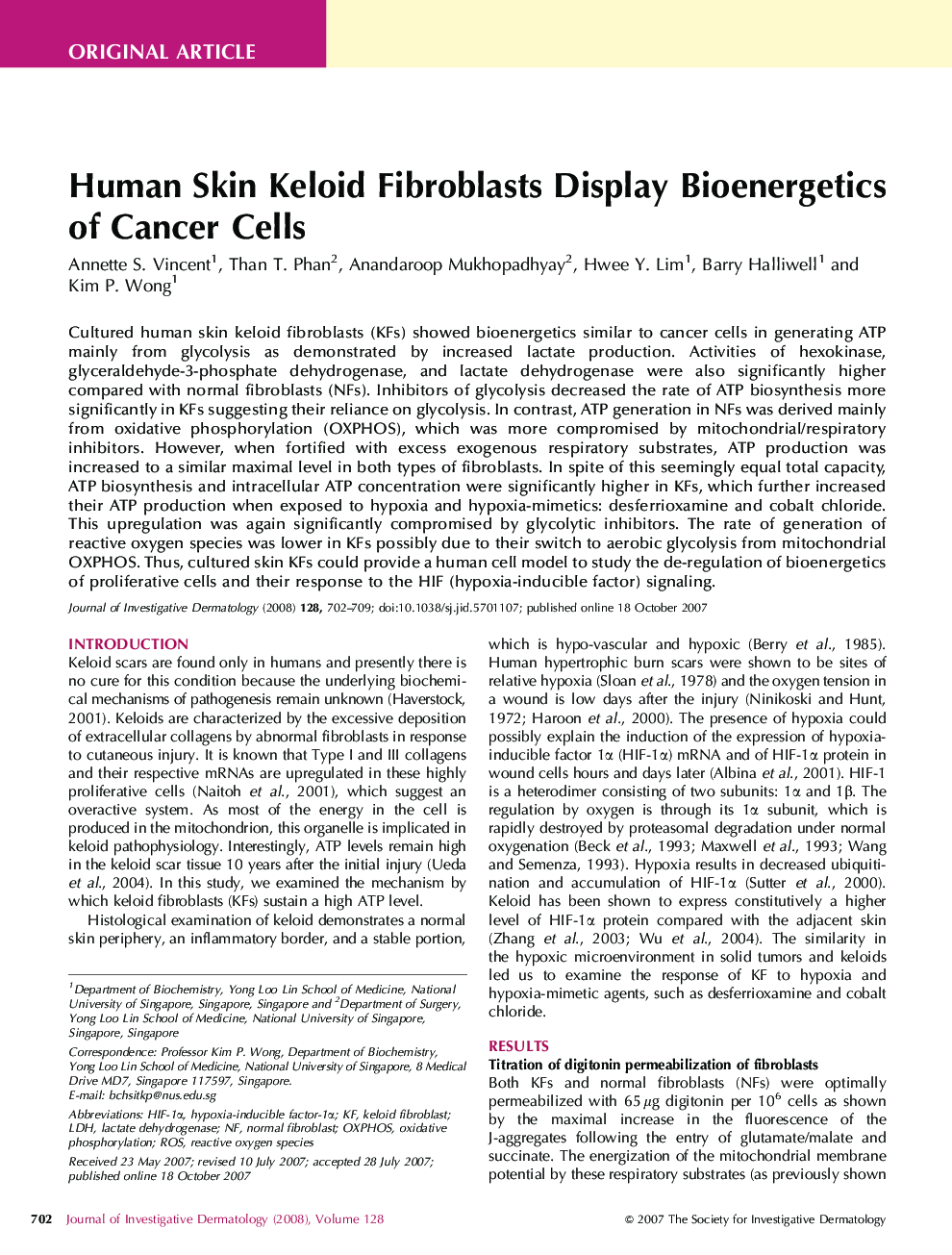| Article ID | Journal | Published Year | Pages | File Type |
|---|---|---|---|---|
| 3216713 | Journal of Investigative Dermatology | 2008 | 8 Pages |
Cultured human skin keloid fibroblasts (KFs) showed bioenergetics similar to cancer cells in generating ATP mainly from glycolysis as demonstrated by increased lactate production. Activities of hexokinase, glyceraldehyde-3-phosphate dehydrogenase, and lactate dehydrogenase were also significantly higher compared with normal fibroblasts (NFs). Inhibitors of glycolysis decreased the rate of ATP biosynthesis more significantly in KFs suggesting their reliance on glycolysis. In contrast, ATP generation in NFs was derived mainly from oxidative phosphorylation (OXPHOS), which was more compromised by mitochondrial/respiratory inhibitors. However, when fortified with excess exogenous respiratory substrates, ATP production was increased to a similar maximal level in both types of fibroblasts. In spite of this seemingly equal total capacity, ATP biosynthesis and intracellular ATP concentration were significantly higher in KFs, which further increased their ATP production when exposed to hypoxia and hypoxia-mimetics: desferrioxamine and cobalt chloride. This upregulation was again significantly compromised by glycolytic inhibitors. The rate of generation of reactive oxygen species was lower in KFs possibly due to their switch to aerobic glycolysis from mitochondrial OXPHOS. Thus, cultured skin KFs could provide a human cell model to study the de-regulation of bioenergetics of proliferative cells and their response to the HIF (hypoxia-inducible factor) signaling.
